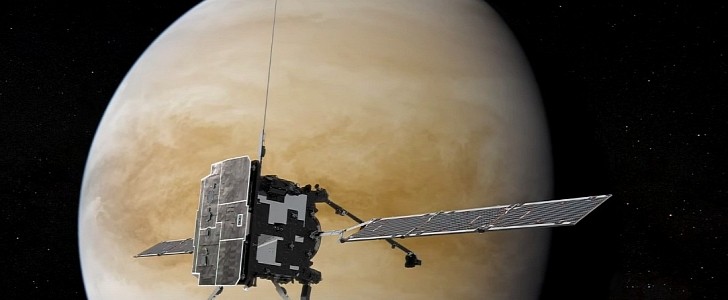On August 9th and 10th, the European Space Agency (ESA) will witness how two spacecraft, the Solar Orbiter, and BepiColombo, will have a close-up meeting with our hellish neighbor to make space history. The two Venus flybys, which are only 33 hours apart, will provide an unprecedented opportunity for the space agency to investigate the planets' hostile environment from multiple perspectives at the same time.
The Solar Orbiter, a spacecraft born from the collaboration between ESA and NASA, will pass by Venus on Sunday, August 9th at 04:42 UTC/ 00:42 ET and will make its closest approach at 7,995 km (4,968 miles). Throughout its mission, it will make repeated gravity assist flybys of Venus to get closer to the Sun and capture the best views of the star's poles.
BepiColombo, a spacecraft created by ESA and JAXA, will fly by Venus on Monday, August 10th, at 13:48 UTC/09:48 ET. It will get even closer to the planet, at an altitude of just 550 km (342 miles). BepiColombo is on its journey to Mercury. Flybys of Earth, Venus, and Mercury, as well as the spacecraft's solar electric propulsion system, are needed to help maneuver it into Mercury orbit against the Sun's massive gravitational pull.
During their close encounter with our neighbor, the two spacecraft will be 575,000 km (357,288 miles) apart and will not be able to take images of each other due to the distance between them. However, they will take images of Venus during the flybys.
Two of BepiColombo's monitoring cameras will be taking photos around the time of close approach and in the days after as the planet fades from view, while the Solar Orbiter will observe the nightside of Venus using its SoloHI imager before it makes its closest approach.
Both will gather data on Venus' magnetic and plasma environment from various locations at the same time. The information gathered during the flybys will also help ESA's future Venus orbiter, EnVision, which is set to have an encounter with the planet in the 2030s.
According to ESA, the first images taken by the Solar Orbiter and BepiColombo are likely to arrive back on Earth on Monday evening, with the majority expected to arrive the next day.
BepiColombo, a spacecraft created by ESA and JAXA, will fly by Venus on Monday, August 10th, at 13:48 UTC/09:48 ET. It will get even closer to the planet, at an altitude of just 550 km (342 miles). BepiColombo is on its journey to Mercury. Flybys of Earth, Venus, and Mercury, as well as the spacecraft's solar electric propulsion system, are needed to help maneuver it into Mercury orbit against the Sun's massive gravitational pull.
During their close encounter with our neighbor, the two spacecraft will be 575,000 km (357,288 miles) apart and will not be able to take images of each other due to the distance between them. However, they will take images of Venus during the flybys.
Two of BepiColombo's monitoring cameras will be taking photos around the time of close approach and in the days after as the planet fades from view, while the Solar Orbiter will observe the nightside of Venus using its SoloHI imager before it makes its closest approach.
Both will gather data on Venus' magnetic and plasma environment from various locations at the same time. The information gathered during the flybys will also help ESA's future Venus orbiter, EnVision, which is set to have an encounter with the planet in the 2030s.
According to ESA, the first images taken by the Solar Orbiter and BepiColombo are likely to arrive back on Earth on Monday evening, with the majority expected to arrive the next day.








